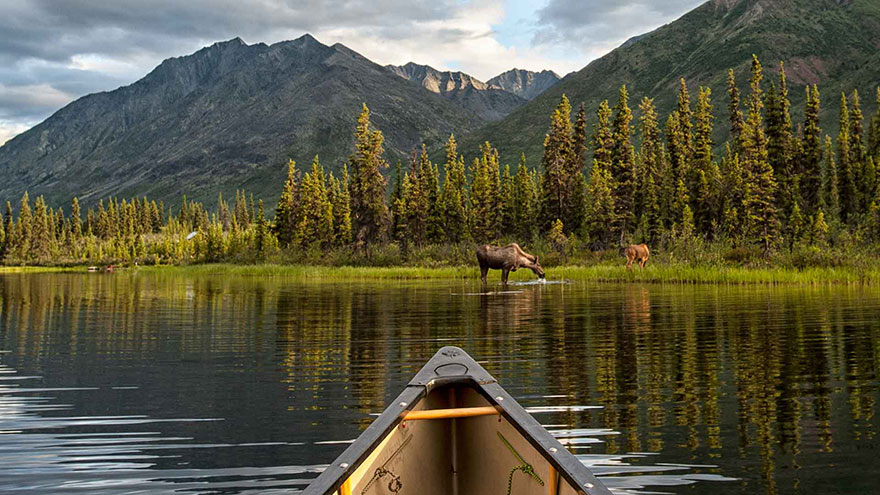Ecotourism in the Yukon Territory, Canada
The goal of ecotourism is a simple one, but not always easily attained. Visitors to some of the most remote and untouched places in the world can enjoy the natural splendor and cultural importance of the land without diminishing its integrity through their presence.
One of the key aspects of ecotourism is, as the saying goes, taking only photographs and leaving only footprints. With millions of acres of undeveloped parks and preserves, there are few better places for ecotourists than Canada‘s Yukon Territory.

Ecotourism Destinations
National and territorial parks in the Yukon are some of the best places to see wildlife, and explore the territory’s vast forests and towering peaks in a sustainable fashion. The largest wilderness in the Yukon is Kluane National Park and Reserve, which spans nearly 8,500 square miles in the southwest corner of the territory.
The park encompasses rugged peaks, lush valleys and forbidding ice fields, and has been home to the Southern Tutchone people for thousands of years. Other destinations include Fishing Branch Territorial Park, where grizzly bears feast on the annual salmon run, and Ivvavik National Park, where the frigid waters of the Firth River tumble through rugged canyons and spill into the Arctic Ocean.
Hiking and Camping
Hiking and camping are among the best ways to immerse yourself in the landscape of the Yukon Territory. Developed campgrounds are in Kluane National Park, Tombstone Territorial Park and Qikiqtaruk Territorial Park, among others, and amenities generally are limited to outhouses, firewood, and bear-proof storage lockers. Sites are first-come, first-serve.
Backcountry tent camping is permitted along hiking trails throughout most national and territorial parks. As a backcountry camper, you must carry in all necessary supplies and leave no trace of your presence when you leave. Try to set up camps at preexisting campsites if available, but avoid sites that appear overused.
Potable drinking water often is unavailable, so you need to treat or purify water from springs and streams. If you’re planning a hiking trip, a detailed trail map is essential. Maps are available through the Parks Canada website, along with detailed information on the necessary permits and registration for overnight hiking and backcountry camping.
Wildlife Viewing and Photography
The Yukon Territory represents a strikingly varied landscape that harbors an equally abundant assortment of wildlife. Bald eagles, grizzly bears, caribou, great horned owls, elk, wolves and bison represent just a handful of the dozens of mammal species and hundreds of bird species that call the Yukon home.
For wildlife viewing and photography, national and territorial parks are great places to start, but you don’t have to go deep into the wilderness to spot wildlife. Scenic driving routes across the territory, including the North and South Klondike highways, Alaska Highway and Top of the World Highway lead visitors through wild areas, where you can spot countless species and snap pictures from the roadside.
Summer is the best time to head out in search of wildlife in the territory, and the Yukon government publishes a wildlife-viewing guide — available for free online — with helpful information on where and when to look for various plants and animals.
Safety Considerations
Safety in the Yukon is a very real concern, especially if you plan to explore the territory’s more untamed areas. Always be aware that you share the territory with a variety of wildlife, including grizzly bears — bear-proof storage containers are mandatory for campers and overnight hikers — and the land really belongs to them, not you.
Avoid interactions with wild animals at all times, both for their safety and yours, and don’t go into the backcountry alone, especially if you’re unfamiliar with the area. First-aid supplies, water purification tools, durable footwear, a compass, cell phone and clothing for all weather conditions are just a few of the essentials if you plan to hike or camp in the Yukon.
Detailed guides to survival skills, bear safety and other necessary information are available for free through the Yukon government official website.
You Might Also Like :: Rules of Ecotourism

